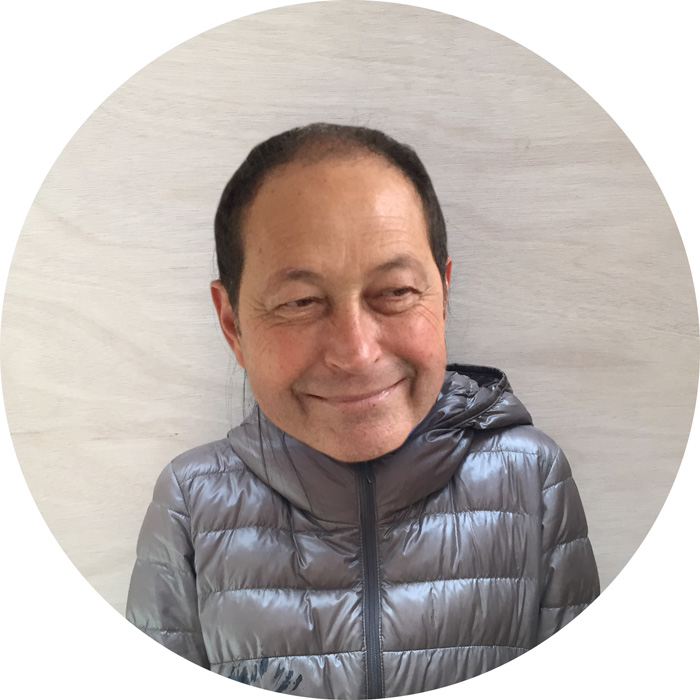
Artist Interviews 2017 – Strijdom van der Merwe
Aritst interview 2017.11.11
Hey Strijdom can you pretend to be Nozomi? ↑ ↑ ↑ ↑ ↑
Nice!
The following interview was recorded and transcribed by me. The words are as original as possible and so more like spoken English rather than written English.
Many thanks to the artists for sparing their time and thoughts for this little project. Much appreciated!
What made you apply for the Kamiyama Artist in Residence program?
Yes.. that was 2003. I'm still trying to try and remember how I came to find it..the only way was on the internet somewhere; sort of searching for residencies in the world, or residencies in the east or something like that. But I remember the thing that struck me (about the KAIR) was it said: you have to be a person that can be alone, work alone, spend time alone or something like that. That was appealing to me because I've been to residencies where the organisers organise some sort of function every night and that becomes too much for me. I like the idea that when applying that they leave you alone and you can do your work and every now and again there is a social gathering. I think that speaks to my personality as I'm not much of a social person and I enjoy my own time alone. That was good about the residency.
Describe your work in one word.
Yeah.. yeah.. Inspired by nature.
Do you have a special method for generating your ideas?
Yeah.. Er.. The work that I enjoy the most, the ideas come from nature. So, i'll go and take a walk in the mountains or next to the river or in the forest, hopefully with no preconceived ideas. I think the true, natural, honest work comes from the material that I didn't know existed in the forest, then I see these leaves or rocks or whatever and I would sit there and sort of absorb the atmosphere of that space and eventually I'd start creating something. The inspiration comes from nature.
It depends though; if you have commissioned work then you have an audience and money involved in it. But when it is this very personal work which I make with no idea that somebody has to come and see it – it's only me making the work for myself in nature then it's only that moment that's important. That I enjoy.
What is the most frightening experience you have ever had?
Hahaha.. Er.. Erm.. I think what.. To give you a good example: all the time I've worked in Kamiyama I've never had someone coming up to me and say 'You're not allowed to work here'. Over the years you learn not to work in someone's garden, let's put it like that! But in South Africa, it's always a problem working somewhere that belongs to someone who hasn't given permission and, it's happened many times, the owner comes driving up in his car with a dust storm behind and saying 'What you doing?!' The thing that I always think about it is 'Do I have the photos on my camera?!'
What makes it so difficult, the kind of work that I do, is.. If I have to go to somebody, a farmer, knock on his door and say Look, I want to walk on your land and rearrange the leaves into nice patterns. To a farmer, who is a practical person, it really sounds like I'm out of my mind! So you don't go and ask permission because it sounds crazy! So you just take a chance and do it and hopefully get the images on your camera!
What is your favourite Japanese food?
Oh my goodness!.. erm.. I have to come up with the names which I can't remember now.. no, I think those little round balls, I don't know what you call it, with the sushi or the fish thingy around it, like a kind of.. that's what I enjoy. I don't enjoy very strong foods.. What's that green stuff that burns? Wasabi! I start getting hiccups and half my mouth feels as though it is melting. I have to keep away from that!
What do you enjoy most about creating art?
Living in your own imagination and forgetting about anyone or everything else. I think in general it can happen that we are so concerned what will other people think about what you are doing.. What will their reaction be? For me, being out in the forest alone, it's just me in the moment and I don't care about anything else. If someone comes around and buys the photo documentation, then that's just a bonus!
What does Kamiyama lack? What does it need?
Well, it has changed. I'm here 14 years later, and it's changed in a very interesting way: apparently in 2003 there were 8000 residents, now there's 5000 residents, but there's more young people. So, I don't know if it's the kind of new lifestyle that young people like to have or is it because of computers that you are more connected to the outside world and that's why you can live here? I believe that Kamiyama is in the process of becoming a cultural village and I would love to see it stay as small as it is. So I'm positive that there must be some kind of control so it doesn't get bigger, and it must stay the rural kind of lifestyle but it must have the strong artist appreciation for people who want to come in and live here and work here for an (artistic) residency.
Maybe I haven't been here for long enough to see all the positives and negatives but I've been here a short while and it is the perfect place for artists to come and work. It's secluded but you have all the things that you need to do your artwork and the committee help you to do those things.
How did you discover your passion for art?
Well.. I grew up on a farm.. I always ask myself the same question.. I think, if I think back about me being a child on a farm, I didn't have the privilege of having lots of other friends from school coming to play or walking in town and doing naughty things. So, I was probably just alone on the farm , so what do you do? You eventually just walk around in nature.. You can only so long look at a rock or grass before you start pulling it or turning it over out of boredom because there's so much of the day left! Eventually you start to discover that there's more to rocks and grass than just looking at it from a distance, so as a small child you see rocks have different colours, textures. Grass you can pull out, you can suck at the end you know.. As a child, being bored and in nature.. Then you grow up, and you go to art school and the teacher tells you 'art is all about colour and texture and perspective' and then you think back and realise that as a child I discovered there was all this in the things I used to play with as a child. I could use all those things in nature in my art. So that's where the cycle starts again. I can just play! I don't have to buy expensive Winston oil paints at $5000 a tube, I can use the autumn leaves to get that same effect.
Do you think you have a particular technique/style?
I mean.. I think all artists learn from each other so of course I'm a great admirer of (Andy) Goldsworthy, Richard Long and all those other land artists that are older than me and whose work I obviously know and studied and so on. Every artist takes a little bit from another artist and he changes it and makes it his own. People always talk about Goldsworthy but if you know Bob Verschueren's work, the Belgian artist who is older than Goldsworthy, he did exactly what Goldsworthy is doing now. So, eventually it comes down to, I always try to say, you know, if somebody makes a painting of a landscape and someone else makes a painting of a landscape you can't say one guy's copying the other guy even though they are both working with acrylics. They both have their own style. I'm constantly asking myself, coming from South Africa, and working with rocks and leaves and sand, which other land artists work with, there must be something in my work which is different from those guys. What makes it different? Is it the history of your country? Is it the culture? Is it the way you grow up that influenced your work? It's constantly in my mind when I'm outside and I do a work then you think to yourself Is this too much like someone else's work? I'm constantly aware of that. Sometimes you fall into the danger zone where you make something that looks different from Goldsworthy or Long or Nils-Udo, and you think This doesn't work because no-one has done it like this before! At that point you must say that this is your own signature.
To be influenced by other artists is reality and a part of life and we all learn from each other how to work. I always say: you can give ten stone to Richard Long, ten stones to Andy Goldsworthy and ten stones to me and tell them to put them in a line. All three lines would look different!
Do you find art difficult?
No, I don't find art difficult. What I find difficult is if it was your only income. Then it becomes a matter of thinking about a 50:50 balance sort of way of life: make things that are honest, what you enjoy and come from your heart. Then you have to think, oh God I've got a family to feed and two children at school you know, Is this going to sell?! Then art becomes difficult because you maybe change the work a little bit to be, in a small way, commercial and make it possible to sell. I'm not at that point where I'm a Picasso and I can do whatever I want and it would sell. The difficulty is that I might have to compromise sometimes with my idea in order to keep doing what I want to do.
I've made a work in Kamiyama now which is just a line of black stones and I put water on them. For me, it's absolutely fantastic, but I know people outside would say 'It's just a black line! What is it?' So, you start thinking, What can I add to it to maybe give it a story? Unfortunately, sometimes this makes art difficult: to make it sellable.
If you were a giant for one month, what would you do?
I'd move rocks around! That would be fantastic! I'd make this huge, giant rock playground. That's the thing, I really enjoy rocks and the larger the rock the more impact it has. It's always a matter of finances to move something as huge as that takes a lot of money and you don't always have a sponsor to help you. So if I could be a giant for a month, I'd make the most fantastic Walt Disney playground of rocks!
How do you feel in Kamiyama?
I feel.. The first thing, a cultural, political thing. The first thing is I feel very safe. Coming from South Africa which has political problems and economical problems and poverty, half the population is out of work and things like that. Here, I feel safe and people don't even lock their doors. It gives this calmness and rest and this contributes to spending more time thinking about your art and creating your work. Everybody greets you and that's it. For the residency. They just leave you alone and you can keep on doing your thing. I feel very comfortable being here and I've never thought that someone is looking strange at me because you've got a European kind of look and you're an outsider.
It's like being a tourist: you visit a country for two weeks and you think This is amazing, I want to live here, but maybe living here is a little bit different. Speaking to some of the people who have moved to Kamiyama, the locals still talk to them, refer to them as outsiders in some ways. But isn't that the beauty of a place? That the local people treasure it so much that they are afraid perhaps new influences will change the way things are. As long as the new influences contribute to that wonderful kind of lifestyle.. I hope that is what I was doing the two times that I've been here: making the local people aware, by shifting things in nature around to make them more aware of the beauty of nature. It happens so many times that, you know, you become so used to where you live that you eventually don't see what's around you and it needs someone else to come in and say 'Look at this waterfall or look at this moss' then suddenly they say 'Oh! Yes it is beautiful! That's why we're still living here!'
How would you like your art to relate to Kamiyama and its residents?
Well.. (I guess this has already just been answered previously) Yeah..
What is the worst thing you’ve ever made?
Gee.. I think the worst thing was trying to dance a typical indigenous dance from a certain culture! Like last night! (Strijdom's leaving party) We had this little function and we had to do this dance and it's not part of you know, your body's normal movement and I had to do this! In your mind you know that this is the worst thing and you hope that nobody is taking a video of it you know! I always feel very uncomfortable. It's not part of my normal aura in which I operate!
What do you think about this ham:

Oh no! Never ever! My children would love it but.. I don't know, the first thing I think is how much MSG was used to get those faces on the ham. But, if you're hungry you'll eat anything!
What do you dislike about your work?
Hmm.. That I have to sell it and make money out of it. I think if there's a general world-wide appreciation for what you do, which is happening in Kamiyama where they invite you, they pay for everything and you get an artists fee that's fantastic but things like that don't happen all the time. So it's to try and sell your work or to try and make money out of it: that's the thing (I dislike). It's my wife's worst nightmare because I'm always giving things away for free!
What is the worst piece of advice you have ever been given?
Don't be an artist. Find a real job!
What is the best smell?
That must be when you walk behind a tractor that's plowing the ground you know, and that smell from the fresh new ground that you get is fantastic. All the birds come and get the little worms and things and the fresh smell of the new earth is really nice. I know when it's raining you also get those nice smells and also flowers obviously have nice smells, but that earth smell is wonderful for me.
Who inspires you?
Nature inspires me first of all, so if I have to live in a city with not much natural landscape around then eventually you will adapt to that and make things in the city. But, I would always be on the look out to find some way to get back to nature. If we talk about people, then my children inspire me at the moment which I never thought would happen because I'm a very late beginner. I'm 56 and now I have two daughters of 8 and 6 but the thing that inspires me about them is when they discover things in the world that have become so much a part of your daily life that you didn't realise that it was something to discover. So, they discovered that a flower, when the sun goes down they close up, then tomorrow it's open again and they go 'Dad! Have you seen that!'. You know it so what does it matter but for them it's this revelation that's happening. It's like discovering life again through someone else's eyes, and helps you appreciate those little normal things in your daily routine which you forget about. It makes you think Can I use this for art? I haven't thought about this for a long time! There's something interesting here!
Can you describe Kamiyama in one word?
Natural beauty. It's probably not the way I describe it but I've never seen clouds coming from a mountain and rising up from the mountain and the mist that's hanging around.. It's the first time I've experienced typhoons and seeing the amount of water coming down the river and the next day it's as if there's never been a typhoon. So it's those natural processes that are so strong and visible. It's just amazing.
If you lived in Kamiyama forever what would you do?
Well.. I'd probably keep on doing art! And, I'd encourage my wife to open a restaurant or something! One of the artworks that I did in Kamiyama we bought trees from a guy that's part of a restaurant that opened near the convenience store, what's that called? Yeah, from the garden to the table or something like that. And that's very appealing for me.
How do you feel when you show your work to the public?
Yeah.. Erm.. Well obviously I was very excited because I felt very happy about what I did. But I have to say that there is always something in your mind that asks the question: does a different culture look differently at nature than I do? For me, to balance a stone on a rock it's just the beauty of the stone and that's it. But in Kamiyama you see rocks standing around everywhere and maybe there's some religious connection with standing rocks. I'm thinking maybe I've got to be careful that they (the people, the audience) see it in the same way as I see it. For me it's just the visual beauty of a rock balanced but maybe they see the picture and they think about funerals or something. That's not my intention. I'm constantly aware of whether we have the same feelings about nature, but they (the audience) have to be open minded too. I am somebody that has a totally different vision of things and so it should give them a new experience.
Do you have a weakness?
Oh gosh.. Difficult! I guess lot's of weaknesses. Erm, selling myself! I know artists whose work is just terrible but they're so very good at selling themselves that eventually people think they're fantastic. The way they handle social media, personality and things like that. So, maybe a weakness is, my personality!! No! You can't say that! The strength is also the personality so it's just a section of it. I don't go around saying Look what I've done! Have you seen this! Come to my studio and blah blah blah. I'm more of a kind of person, you know, who if you discover (my work) along the way and you like it then that's fantastic. I'm not going to force you to look at what I've done, you know. There are so many artists in the world and it's so competitive so maybe you have to be this kind of pushing kind of person to survive..
——
Other Artist Interviews
2017
Pablo Mercado
Ivan Juarez
Nozomi Watanabe
2013
Sayaka Abe
Nik Christensen
Susken Rosenthal
2011
Yui Inoue
Kevin Yates
Marina Carvalho
2010
Midori Hirota
Ilgvars Zalans
Adam Avikainen
Yukie Hori
Poh Wang

itoi+ru-san
Itoi-san - Kanuma soil. Likes salmon sashimi, dislikes entrails of sea cucumber. Ru-san - Lancashire hotpot. Creative type. Likes being outdoors. Dislikes status. Together we are ITOI ARTS a project in divergent creativity in the mountains of Shikoku, Japan. 四国の山奥、多様な創作、アートとは。 //イベント時のみオープン// \\ふだんはただの家//
Articles by itoi+ru-sanTo comment
コメントを残す
“Aritst interview”Latest bulletin
“Aritst interview” archives- Aki Rika (12)
- Chan (11)
- Claire Tanaka (3)
- Folklore and History (1)
- Karin van der Molen (13)
- Rakuon Rakujitsu (1)
- Taste of Kamiyama (4)

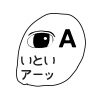
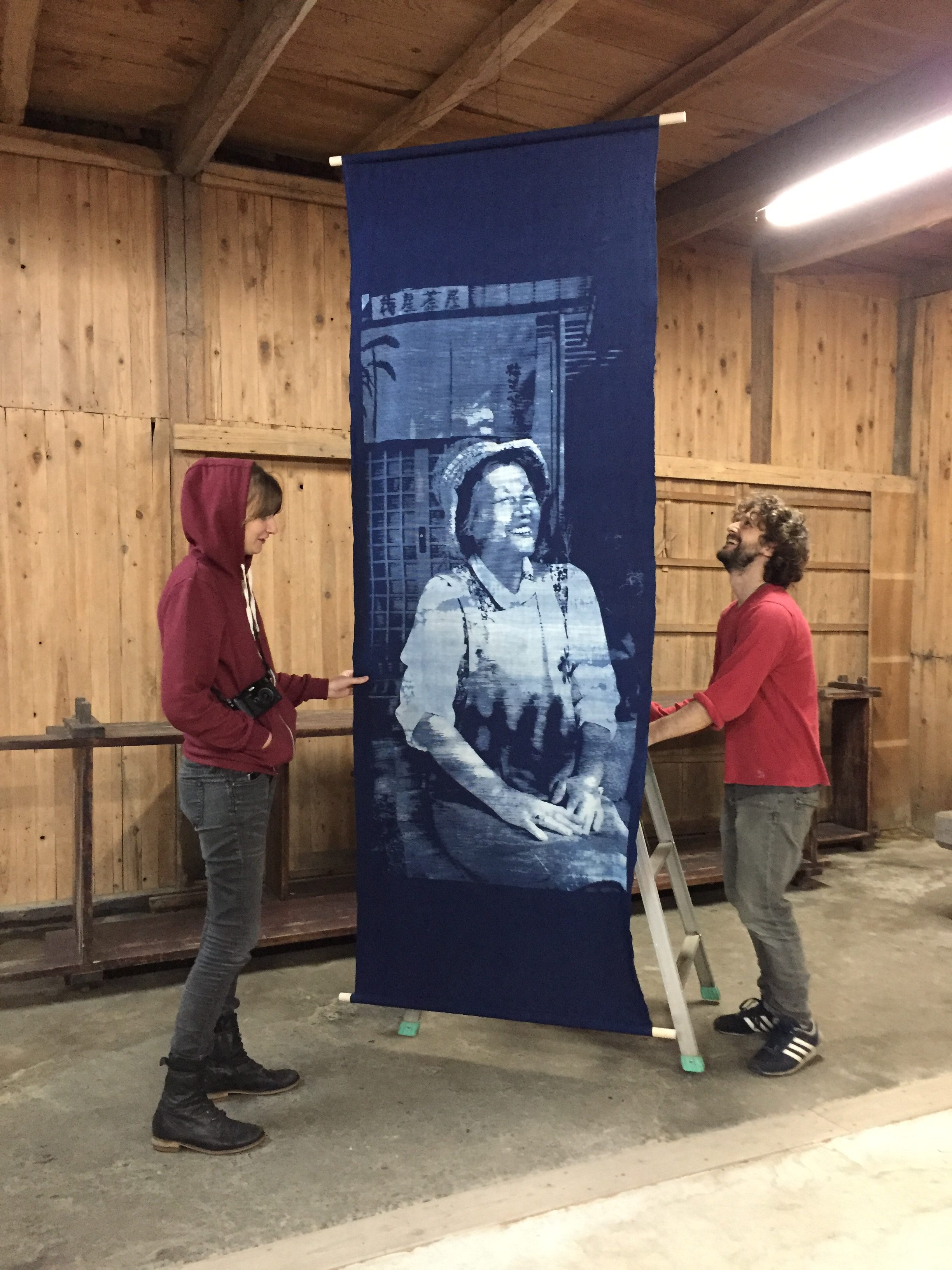

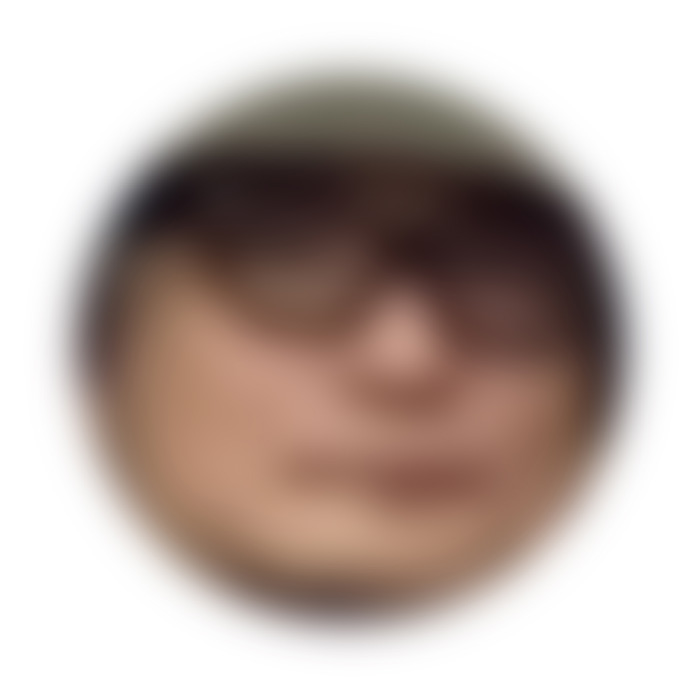

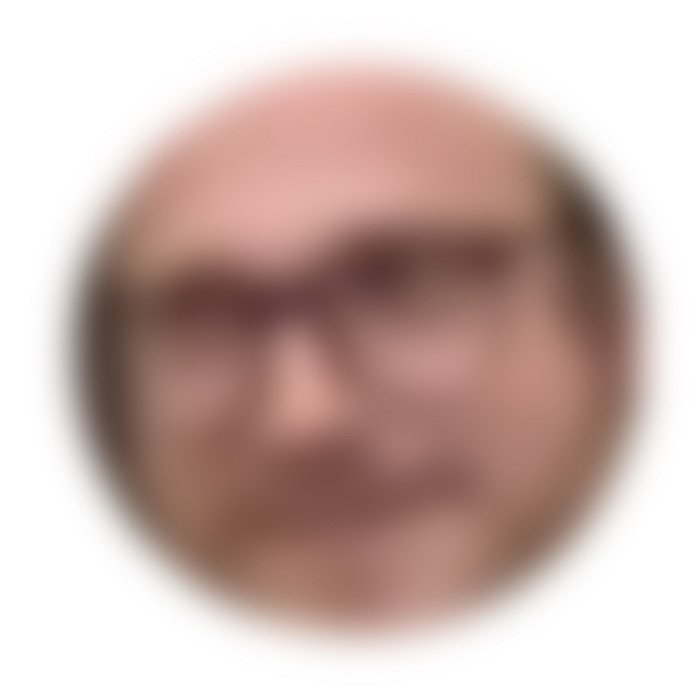
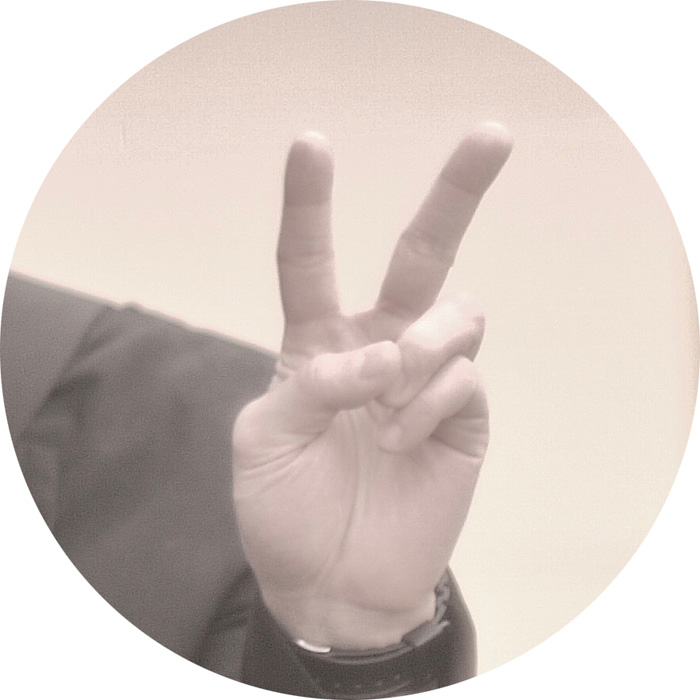
Comments